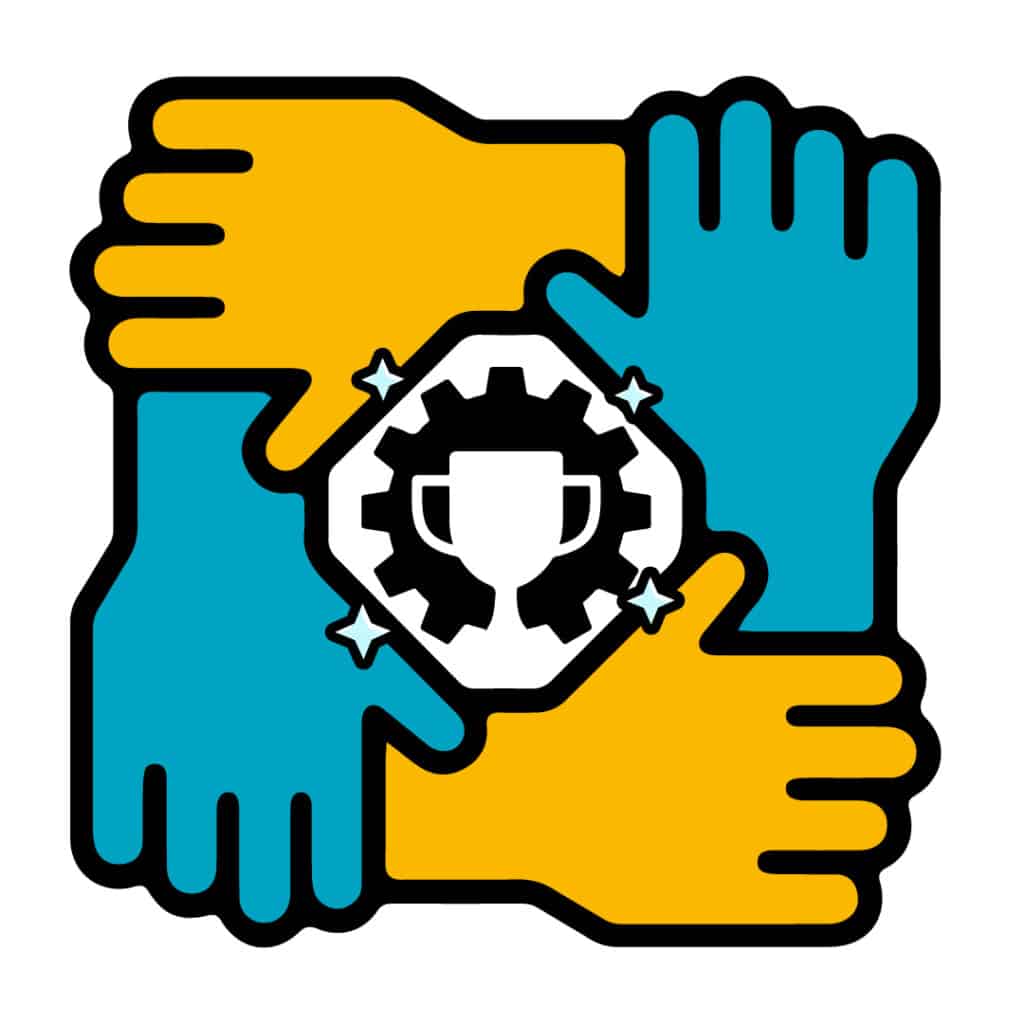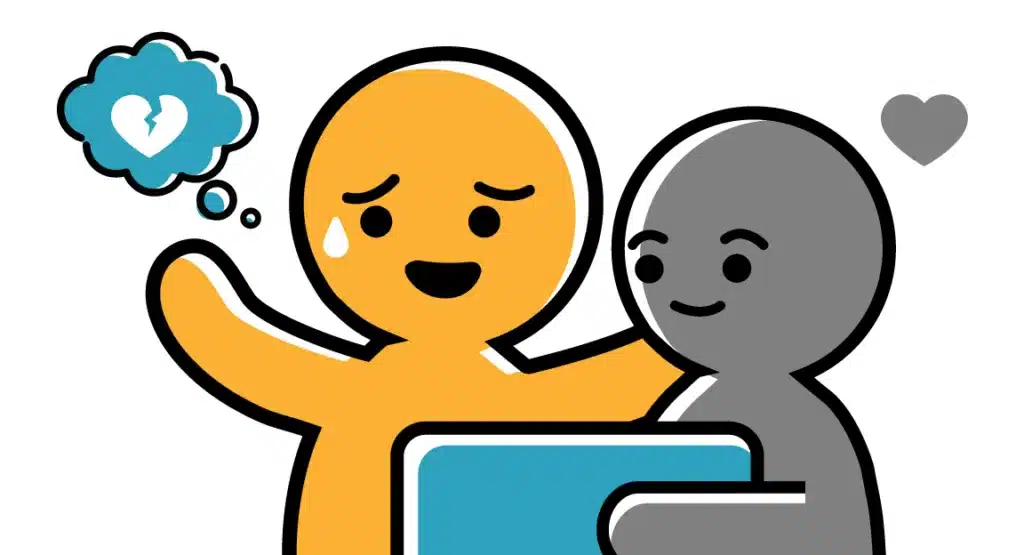What Trumps Culture? Understanding the Impact of Team Dynamic

You’ve heard the Peter Drucker quote, “Culture eats strategy for breakfast.” It’s a simple way to say the overall vibe and values within a credit union have a stronger impact on success than the best-laid plans or tactics. But is there something that eats culture? The most brilliant strategy at a credit union doesn’t stand a chance with a culture that is negative or misaligned. A healthy culture promotes adaptability and resilience, enabling organizations to better navigate change and unexpected challenges. When the culture is strong, employees are more likely to be aligned with the credit union’s vision and mission. And we know that a positive culture attracts top talent. A study by Glassdoor found that 77% of people consider a company’s culture before applying for a job, and 56% rank a good workplace culture as more important than salary. So, while we know culture is important, something does, in fact, eat culture. Teams. Culture refers to the shared values, beliefs, norms, and practices that characterize an organization. Amazon has a “customer obsession” culture. Salesforce’s culture is built around the concept of Ohana, meaning family. Airbnb’s culture? Belonging. Patagonia fosters a culture of environmental responsibility. Now, if only it was as easy as finding employees that identify with the core values and principles within each of these company’s culture – as distinct as they are. A strong organizational culture is the underlying fabric of your credit union, but that’s just it: It’s the backbone. The foundation. The framework. It’s not the trenches. Culture is an abstract, pervasive force shaping overall behavior, whereas teams are groups of individuals who come together to achieve specific goals or tasks. They are cross-functional, department-specific, or project-based. Team dynamics are influenced by the member’s skills, personalities, and the team-leader’s style. When it comes to staffing challenges at your credit union, a powerful culture will attract employees, and poor team dynamics will drive them away. Conflict, lack of collaboration, poor management practices, workload imbalance, lack of recognition, etc. are what cause employees to leave. And yes, you can have an organizational culture that sets the tone and values of the credit union and still fails miserably with teams. So, where do you start? Assess Team Dynamics This often starts with getting out of your own head. Too often, we fall into the trap of reverting back to a culture as “the fix.” It may fix the problem… but it may not. Instead, observe team meetings and interactions to identify any viable issues or conflicts. Distribute surveys or conduct feedback sessions to gather input from employees about team interactions, communication, workload, and leadership. Develop an Action Plan From improving communication to enhancing collaboration to reducing conflicts, set clear, measurable goals. Develop and implement training programs focused on team dynamics, and plan regular, team-building activities to strengthen relationships and foster a sense of unity. Monitor Progress and Adjust Establish ongoing feedback loops where employees can provide input on the effectiveness of implemented changes. Schedule regular check-ins with teams to discuss progress, challenges, and any new issues that arise. It is okay to adjust the action plan. Note Well: As leaders, guide your teams to find the best solutions; do not do it for them. After all, being in the trenches, they may be aware of more than you. Both culture and team dynamics are crucial. They are two sides of the same coin. A positive culture sets the tone and values, creating an environment where employees feel connected and motivated. It is the quality of team interactions, leadership, and collaboration, however, that directly impacts their daily work experience, and ultimately their decision to stay or go. If you need help enhancing your credit union culture or improving team dynamics, YMC is here to assist. We can develop strategies and implement practices to transform your workplace into an environment where both culture and teams flourish. As Vice President of Brand Experience for Your Marketing Co., Frank Allgood works with credit unions to develop strong leaders, create effective training programs, and build powerful brands. Want to connect? Call 864.326.8740 or email frank@yourmarketingco.com.
Abandon Ship? Why Frequency is Your Brand’s Lifeboat

When a credit union leader says they want to do a short run on a campaign, my initial response is, “Are we swimming or treading water?” Unfortunately, too many credit unions are only looking to dip their toe in the water. Let me explain. As someone who lives in the Carolinas, I’m very aware that FanDuel and DraftKings have arrived in North Carolina. With the legalization of online sports betting in the Tar Heel State on March 11, these two powerhouse brands blitzed almost every streaming and media service provider imaginable over the past 60 days leading up to the deadline, including pre-registration bonuses and influencer marketing. Of course, the key to their short run campaign was frequency. And, oh boy, have both FanDuel and DraftKings poured a ton of money into acquiring new customers during the initial launch phase. By contrast, we know of a credit union in the Rocky Mountains region of the United States that identified a new market two hours away from their homebase in another state. They boasted that if a FinTech can enter a new market without a physical branch, so could they. They talked a good game with an “all in” attitude. Unfortunately, their strategy and budget said otherwise. Their campaign burned hot and fast, and they were out within 45 days with little to show for their efforts. Short run campaigns that are most successful for credit unions tend to be experiential marketing, where there are pop-up events or interactive experiences that generates excitement or media buzz. A promoted flash loan or limited time deposit special can also drive engagement, but only when it is supported by a high level of frequency. In a short timeframe, you need to build familiarity, create a sense of urgency, overcome competition, and ensure your audience can absorb your messaging. There’s the old “Marketing Rule of 7,” which suggest someone must see or hear a message at least seven times before they’ll commit to act. With modern attention spans, I would suggest we are well beyond seven touch points. We must take a more strategic approach and dig deeper into the platforms our target audience frequents and consider campaign pacing and clear messaging. By contrast, long-term campaigns help build brand awareness, foster trust and creditability, and can change perceptions about your credit union. Here’s the kicker: Your true adversary isn’t your competitors, it’s obscurity. To increase market share, you need to increase your presence and credibility, and that only comes with a long-term strategy where you are not just selling what people want, but rather you are positioning what matters most to your target audience. If I were to ask you, “What brand is associated with happiness,” the answer is Coca-Cola. Go ahead. Google it! Only, Coca-Cola ended their “Open Happiness” campaign in 2016. So, why does is still resonate with us? That campaign ran for seven years. It’s successor, “Taste the Feeling,” which is going on eight years, emphasizes the experience of the product itself, but compliments the idea that Coke brings happiness. When it comes to your credit union’s brand story, let’s not just tell it for 60 days but for a lifetime. As Vice President of Brand Experience for Your Marketing Co., Frank Allgood works with credit unions to develop strong leaders, create effective training programs, and build powerful brands. Want to connect? Call 864.326.8740 or email frank@yourmarketingco.com
Help Your Team Get More Stuff Done

Is your team brimming with excitement, engagement, and fervor for their roles? Distractions, interruptions, and inefficient workflows can hinder even the most exceptional credit union teams. Surprisingly, we’re quick to turn to perks and incentives to keep people motivated rather than practical steps to improve productivity. Why is that? We encounter statistics, such as those highlighted in Slack’s 2023 State of Work survey, indicating that 82% of employees identify feeling happy and engaged at work as a pivotal factor influencing productivity. So, we throw more toward things such as casual dress codes, wellness programs, and free food. It is often structure, however, that reduces fatigue, stress, and anxiety, which leads to happiness. Maybe, just maybe, we have things backwards. So, before you start the conversation about offering free yoga classes, what’s holding your credit union back? Here are three practical ways to help your employees get more stuff done. Dive into the Flow Zone You know those days when your team is juggling a dozen different tasks at once, feeling like they’re barely keeping their heads above water? Encourage your team to batch similar task together. By focusing on one type of task at a time, your team can minimize distractions and maximize efficiency. What specific tasks or processes are causing bottlenecks or delays within the credit union? Are there any communication breakdowns or misunderstandings contributing to any workflow issues? Work with your team to get to the root cause of workflow problems. Champion Service Excellence Every interaction with a member is an opportunity not just to provide outstanding service but also to upsell or cross-sell. Encourage your team to listen closely to a member’s needs and preferences, and empower them to suggest relevant products or services that could enhance the member’s experience. Championing service excellence isn’t just about solving problems. It’s going above and beyond to wow your members and keep them coming back for more. Utilize Downtime Strategically Empower your credit union personnel to excel in their roles by using those quieter moments to foster a culture of learning and improvement. This can be regular professional development sessions, online learning training modules, or knowledge sharing sessions where teammates can share insights, experience, and best practices with colleagues. It’s important to remember that downtime is important for creativity, self-improvement, and rest and recovery. It is not meant for catchup work. If you are using downtime for busy work, you’re denying growth opportunities. Set the Tone Which of these strategies can you start immediately? Remember: Leaders who demonstrate high levels of productivity inspire and motivate their team members to do the same. Leading by example shows that productivity is valued and expected within the organization. As Vice President of Brand Experience for Your Marketing Co., Frank Allgood works with credit unions to develop strong leaders, create effective training programs, and build powerful brands. Want to connect? Call 864.326.8740 or email frank@yourmarketingco.com.
Personal Growth for Credit Union Professionals

Reflecting on the Year That Was As the year draws to a close, there’s a natural urge to shift our focus to the future. Before you do… what story did this past year tell? How have your chapters unfolded? Let’s not overlook the art of personal reflection. It can illuminate your path forward and pave the way for a more intentional and prosperous new year. Before we begin, let’s laydown a ground rule. There are some common barriers and excuses used by credit union professionals. Blaming the economy, time constraints, and comparison to others can distract us from gaining clarity. When we focus on external factors as the cause of our problems, we adopt a victim mentality. A negative mindset can hinder personal growth and professional development. Instead, let’s focus on empowering personal responsibility. Celebrate Your Wins No matter how big or small, you’ve made progress. As a credit union professional, you’ve made an impact on your member’s lives. List your accomplishments and milestones. Consider any feedback or recognition you received from colleagues, supervisors, or clients. Revisit goals you set for yourself. Even if they weren’t fully met, partial success can still be considered a win. Remember: Progress, not perfection. Learn from Setbacks Setbacks and challenges provide valuable lessons that can help you grow both personally and professionally. Assess the root causes. Was it a lack of a specific skill, poor decision-making, procrastination or maybe difficulty in setting priorities? Perhaps it was excessive workloads, lack of setting boundaries, communication issues, or negative self-talk. Resilience is a key trait in personal growth. Identify what went wrong and how you can improve in the future. Prioritize Your Well-Being Are you well-rested, healthy, and happy? Take time to assess your physical and mental health. This could involve regular exercise, mindfulness practices, or simply spending more time with loved ones. As you start to tell yourself “yes,” you will also need to learn to say “no” to things that zap your time and energy. Note Well: Sometimes well-being can be used as an excuse for not getting things done. You can over-schedule self-care. You can use it as escape from responsibilities or as a source for external validation or sympathy from others. You can even overly focus on well-being to the point of perfectionism. Seek a healthy equilibrium by setting realistic goals. Seek Feedback Seeking feedback opens us up to the potential for disapproval, which is why we rarely ask for it. Too often we can’t seem to separate self-worth from feedback. The truth, however, is you develop a growth mindset when you view feedback as an opportunity for learning and growth. When you ask for feedback regularly, you’ll become more comfortable with it over time. You do not need to wait for your next performance review to ask for it. When asking for feedback, request specific and actionable suggestions. This can make feedback feel less intimidating and more practical. Embrace Change with Gratitude Change is an inevitable part of life, and how we embrace it can greatly influence our personal growth. Meanwhile, gratitude is a practice that involves acknowledging and appreciating the positive aspects of our lives, both big and small. By embracing change with gratitude, you will improve relationships, become more resilient, and find yourself more prepared for circumstances and challenges that lie ahead. Remember this: the past year’s victories or setbacks have shaped the credit union professional you are today. With a resilient spirit and commitment to personal growth, you can take on this new year as an opportunity to write new chapters. Embrace the upcoming year with open arms, and make it your best year ever. As Vice President of Brand Experience for Your Marketing Co., Frank Allgood works with credit unions to develop strong leaders, create effective training programs, and build powerful brands. Want to connect? Call 864.326.8740 or email frank@yourmarketingco.com.
The Pandemic of Nice is Not Working Out

I’ve had a recurring theme in conversations with credit union leaders this year. “Bo, I just don’t know if all my staff is on board. I don’t know if they are a good fit to take us to the next level, where we’re going.” OUCH! That is a touchy conversation. But the fact that these credit union leaders recognize the problem is a great first step. Perhaps you’re thinking the same thing but afraid to verbalize it to your team or board. Perhaps deep down you’re really frustrated but refuse to bring it up to avoid tough conversations. As a credit union leader, it can be easy to make excuses and trick yourself into thinking that allowing underperforming and unengaged employees to stay on your team is the kind and generous thing to do. “Well, Sally has been here 23 years…” It’s not. It doesn’t help your credit union, your members nor the rest of your credit union team. In fact, I’ll share with you the tough words one mentor had for me on this subject: It’s selfish. Just because you hate having tough conversations, doesn’t mean the entire rest of your organization, members and your mission should suffer. Here are some outcomes I have personally experienced because of this very scenario, and what I have observed from other credit unions: 1. Good team members become toxic. Your culture is defined by the worst behavior you are willing to tolerate. “Why should I work my ass off and give 110% when Sally is as productive as a Ficus tree?” You start to either lose productivity from good team members, or they go somewhere else that has a team of high performers to match their energy. Opposite that, when team members see that good work is rewarded and bad work has no place, they’ll know that they’re at an organization that’s worth staying at. It’s easy to think that firing an employee puts other employees on edge. More often, it sends a signal to the good employees that you’re on their side and don’t want them to spend time compensating for underperformers. 2. You’re holding that person back. Keeping someone on your team that isn’t a good fit isn’t just holding your credit union, but also, it’s holding that person back. There’s a good chance that person is very unhappy and is as afraid to make that decision as you are. There’s only so many working years someone has ahead of them. 3. You and your team begin to think differently. There is not one person that has been fired from my organization because I woke up one day in a bad mood. I always use the word CHOOSE. If you have updated and specific job descriptions (we call them KRAs or Key Result Areas), expectations for work and what success looks like will be clear. If you have an underperforming team member, first look to yourself and ask some tough questions. Are your expectations not clear? Have you failed to provide training or tools to make them successful? If you get past those questions, you turn your questions toward the underperforming team member. “Why are you choosing not to do the work?” This question allows you to not be the bad guy but focus specifically on the choice the team member is making to not do the work to achieve the desired results. 4. You’re wasting time. You have good team members who are craving your time and attention to grow and prosper in their position and become a better asset to your team. Instead, you are spending time having the same conversations with the same underperforming team members. You waste time on conversations with no outcomes and headspace in the “what if” scenarios that you have no intention of acting on. Let me give some clearly defined solutions if you find yourself in this place right now:1. Update your job descriptions. Make sure expectations of both task and outcome are clearly defined so there is no wiggle room when review time comes around.2. Speak up. Don’t avoid tough conversations. When a team member at your credit union is not living up to their potential and dragging the team down, talk about it. Identify the problem and what the desired behavior is and give a timeframe for when the performance should turn around.3. Hold your leadership team accountable. Sometimes it’s not a team member issue, it’s a leadership issue. What does all of this have to do with credit union marketing? Marketing is a team sport, and if you are spending money on marketing and bewildered as to why no matter what you try you just can’t find success, it may be a cultural issue that needs to be dealt with. Leads may be coming in for new loans and new members but lost to a poor first experience with your credit union because of an underperforming on disengaged team member. That’s a lot of credit union marketing dollars wasted! Every member experience can either build or kill your credit union’s brand and negate your marketing. Ready to discuss real change for success? Let’s talk!
The Art of Persuasion in Credit Union Sales Success

Year-End Sales Push: Persuasion TipsAs we stand on the cusp of the busiest time of the year, with year-end credit union goals looming large, it’s crucial to recognize that the art of persuasion can be a game-changer, not only for you, but for your entire team. Sales, at its core, is not just about products or services; it’s about people. It’s about understanding the member’s interests, needs and aspirations. It’s about making them feel important and valued. Success hinges on more than just closing loans, opening accounts, and welcoming new members; it’s about forging lasting connections and creating genuine value. Let’s unlock the secrets of persuasion that can reshape your approach to sales at your credit union. Understanding Your Members’ Needs Emotional appeal is a remarkable power in sales. Every person carries a unique story within them, filled with emotions, experiences and desires. Take time to engage with them, ask questions and actively listen to their concerns. You have the opportunity to position your products or services as the key to unlocking the door to their aspirations. Remember this: Questions pave the path to solutions, and solutions pave the way to buyers. The Power of Authenticity Encourage your frontline staff and loan officers to drop the sales scripts and foster genuine connections. When members trust your team, they’re more likely to consider the financial products and services you recommend. Authenticity equips you and your team to address objections with confidence because you’re not peddling a product; you’re offering a solution you genuinely believe in. Note Well: You may be thinking, “I’m not sure I want (insert name) to be unapologetically himself/herself.” If that’s the case, it’s essential to consider whether you have the right person on your team. In a sales environment where being relatable and authentic is key, having the right people can make all the difference in achieving your goals and fostering lasting member relationships. Skillful Follow-Up Techniques Don’t be a pest. Instead, be skillful. Persistence is often the dividing line between a successful sale and missed opportunities. Train your frontline staff to stay in touch with members, answer inquiries promptly, and provide additional information as needed. So long as your narrative remains genuinely interested in making the members’ lives better, you are not being annoying; you are conveying an unwavering commitment to serve their needs. Of course, nobody wants a barrage of emails or phone calls, and there are tactics for a well-timed response. The kicker, however, is making sure your team understands the need to do it. Too often people hesitate because they fear rejection or have too many distractions and forget. Make follow-up habits a priority at your credit union. Building Strong Relationships Relationships are the bedrock upon which successful credit unions are formed. People are more likely to buy from someone they like, and your service reputation is what members carry with them and share with others. There’s an adage of “to get loyalty, you must give loyalty.” How true it is! Teach your staff how to create a connection, find a common ground, and make your members feel valued and understood. The Impact of Showing Appreciation There’s a reason why Chick-fil-a employees say, “my pleasure” rather than “no problem.” It’s warm, memorable, and different. Gratitude is a powerful motivator. Remind your team that they become known by the actions they take (and those they don’t). Showing appreciation fosters goodwill. When your team learns the art of persuasion, what you’ll find is that generosity will be reciprocated by your membership. This is how you create enthusiastic advocates for your credit union. Follow the steps and create a ripple effect of raving fans at your credit union. Need help teaching the art of persuasion? Reach out to us!
Boost Your Leadership Skills This Fall: 5 Strategies for Success

In Autumn’s cloak of colors, like a pirate in disguise, It sneaks upon us, robbing focus from our eyes. We chart our course for New Year’s goals, so clear, But fall’s distractions hijack, causing us to veer. The fall season is typically reserved by credit unions to set clear objectives and strategies for the New Year. Only, let’s talk about something that always seems to bubble up: leadership fatigue. During these holiday months your focus must contend with heighten member demand, employee leave and time off, financial reporting, annual performance evaluations and employee reviews, party planning, gift buying and, oh yeah… family needs. Before the holiday hustle, let’s take a timeout right now to sharpen our leadership skills. Here are five strategies to help credit union leaders like yourself elevate your leadership game. Mindset A strong mindset allows you to steer your team through the end-of-year distractions with confidence. Analyze the story in your head. Are you being closed-off and self-centered? Perhaps you have self-doubt or a pessimistic inner dialogue about yourself or your team. Or maybe you have unrealistic expectations and are setting yourself up for disappointment. One way to develop a stronger mindset is to examine the routine within your routine. Look beyond the surface of everyday challenges and examining the deeper, often hidden, elements that could be eroding your outlook. Inspect Inspect how your strategies are implemented by the frontline team at your credit union. Are your team members’ behaviors aligned with your vision? It’s this time of year where you’ll find those who become less engaged with the credit union and those who are truly team players. Regular check-ins and feedback loops can ensure everyone is on the same page. Attitude Are you having a bad day or a bad attitude? Identify what’s impacting your attitude and address it. And understand this: How you experience outside factors is 100% within you. Be a driving force that inspires and motivates your credit union. Limits Time is your most precious resource as a leader. Recognize that you can’t do it all. Set limits on tasks that don’t contribute significantly to your goals and block out time so you can think strategically. Be wary of distractions, delegate effectively and concentrate on what truly matters. Take it to the next level and encourage your entire credit union to do the same. By eliminating non-essential distractions and focusing on high-impact activities, you can maximize your productivity. What tasks are your team doing that could be eliminated or automated? Collaboration It’s amazing that at a time when we should come together, we often feel the most apart. Everyone seems on edge as their time is limited. Do you ever find there’s forced cheerfulness? Reflect on how you can create a more inclusive and enjoyable experience for all involved. When you establish purposeful relationships, you’ll drive and sustain more desirable outcomes. As credit union leaders, these practices will not only enhance your leadership skills but also drive success for your organization. With holidays and festivities, our path does sway, Like treasure-seeking pirates, we lose our way. Yet as the leave fall, remember, we can reclaim, Our goals and dreams, to steer our ship again. Embrace the season of change and growth. As Vice President of Brand Experience for Your Marketing Co., Frank Allgood works with credit unions to develop strong leaders, create effective training programs, and build powerful brands. Want to connect? Call 864.326.8740 or email frank@yourmarketingco.com.
Relationships

Here’s an interesting question. What is one of the longest, if not the longest, relationships a person will experience in their life? Here’s a hint – it’s not a marriage. In fact, it may not even be friendship. It’s a person’s relationship with their bank, and primarily, their checking account. It’s true! Just think of the longest relationships and biggest life needs and you’ll be amazed. The average length of car ownership? Eight years. Homeownership? A little better, but only 13 years. A marriage last longer, right? Nope! Most last eight years on average. Friendships are the closest to the truth at 17 years but still not quite as long as a person’s relationship with their checking account and bank. That comes in at almost 18 years! This provides some explanation for why it can be difficult to convince that member to move their relationship to us. We’ve asked and we’ve asked but they just don’t seem to budge! Well, let’s look at why it can be so hard to convince them to move their primary relationship to us (and why some relationships just don’t last)! Looking back to the statistic on marriage, Robert Taibbi L.C.S.W. states that adult development moves in roughly seven years blocks. Why? Needs change. People change. Seven years is a significant amount of time. Just think about how often your needs change financially. Odds are, you aren’t in the same financial place as you were even six months ago, let alone seven years ago! The fact is, needs change and if those needs aren’t being met – sometimes it’s best to look to a new provider. And people do just that. So why, if needs change financially, more often than romantically, do more people stay with their bank rather than move? Studies show the largest factor is pricing. Two types of costs are to be considered here – time and money. Roughly 48% of checking accounts are considered free or not having a monthly charge. Those that do charge a fee, charge $14 a month or almost $170 a year for their service. Also, the convenience. Moving a checking account isn’t easy or fun. Balancing the need to move with the cost (and aggravation) of moving is a fine balancing act. Often, the monetary savings doesn’t overcome the time expense of the move. Much like a friend is stuck in a bad marriage, our prospective members may be staying with their bank simply due to the fact that it costs so much to get a divorce! Although as the known joke says, the reason divorces cost so much is because they’re worth it. So, if you’re looking to grow your membership but coming up short, what would make the cost of divorcing your current bank worth it? Let’s look at a few steps to consider increasing your member acquisition and target the right members for your organization. Need help to determine your ideal member or researching what matters most to them? Reach out to us! We help narrow the field of vision so that the only people who have eyes for you are those you are best to serve.







